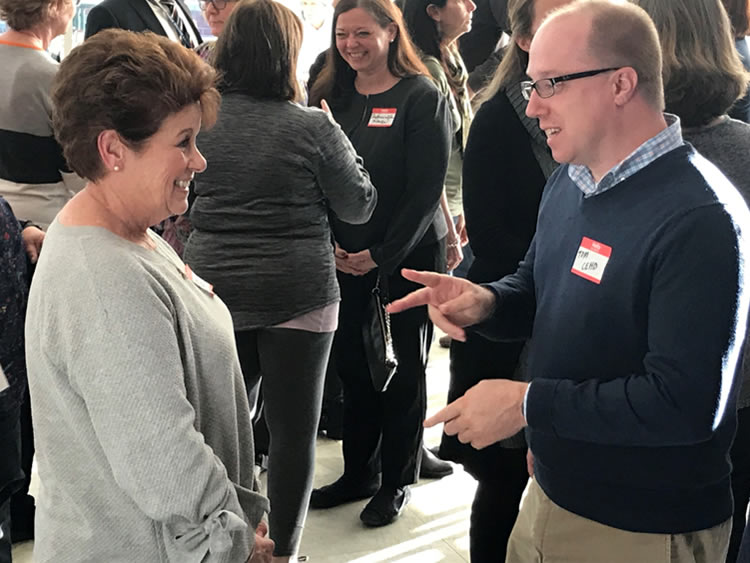CEHD Helps Support Adjunct Faculty Self-Study Collaborative at Mason
March 25, 2018
More than 20 adjunct faculty from colleges and disciplines across the university—as well as an equally diverse group of facilitators—met on March 5 to talk, share their visions, practice as educators, and begin to design a self-study teacher research project. After brief introductions by the facilitators and warm welcoming remarks by College of Education and Human Development (CEHD) Dean Mark Ginsberg and Stearns Center for Teaching and Learning (SCTL) Director Shelley Reid (sponsors of the project along with Faculty Affairs and Development in the Office of the Provost), participants formed critical friend teams to create and share the initial sketching of a personal-situated teaching inquiry to improve their students’ learning. This transdisciplinary team of faculty had just launched a year-long online learning community: the Adjunct Faculty Self-Study Collaborative at Mason: Building a Professional Community with Adjuncts as Faculty Associate Compeers.
“Camaraderie is an element that really came through in my observations of the launch,” said CEHD Professor Anastasia Samaras. “There was a hunger for professional networking as a community of adjunct faculty. They worked easily with each other as complete strangers and from different colleges and disciplines. I noticed a welcoming and inclusiveness they had as if they had known each other all along and, in many ways, they had.”
As a group committed to supporting adjuncts, faculty members Anastasia Samaras, Lynne Scott Constantine, Lesley Smith, Paula Cristina Azevedo, Anya Evmenova, Margret Hjalmarson, Arvinder Johri, and Allison Ward-Parsons with doctoral student Lorraine Goldberg had asked a few questions, such as: In what ways might adjunct faculty gain membership and a sense of belonging in the fuller Mason teaching community? And how do we work collectively to extend adjunct faculty knowledge of/about teaching as a community of continuous learners?
To address these major concerns, they proposed, and were awarded, a CEHD Seed Grant to design and enact a virtual adjunct faculty collaborative that combined self-study methodology with visually rich digital tools.
This collaboration responds both to one of Mason’s goals and to a primary goal of the College of Education and Human Development: to engage, include, and support adjunct faculty members. Beyond attending brief university, college, and program orientations, adjunct faculty often lack the time, resources, and financial support to immerse themselves in the study of teaching and learning that supports the innovative learning demanded by the university’s strategic plan. The design embeds opportunities for adjunct faculty to become future facilitators in an ongoing virtual network, which will be useful to other public universities in Virginia and further afield.
The structured, systematic self-study methodology for research on professional practice is a powerful tool for exploring and learning novel approaches to teaching and scholarship. This methodology has been shared and adopted with great success in three prior learning communities (2010–2016) sponsored by the SCTL, with additional support from the Office of Distance Education (now Digital Learning) and 4VA (e.g., Self-Study Scholars’ Collaborative).
In addition, as a component of the SIMPLE NSF funded grant, a STEM self-study faculty learning community that crossed STEM fields and academic status proved similarly successful. Through self-study skillfully taught and assiduously pursued, old habits give way to branching possibilities and to contextually appropriate strategies for reinventing curricula, instructional practices, and above all, beliefs and attitudes about one’s own capabilities, and those of one’s students.

Adjunct Faculty Speed Networking
